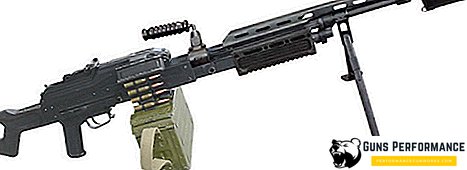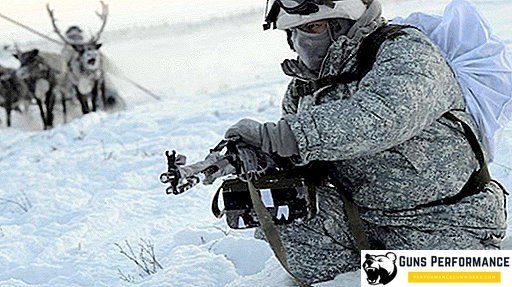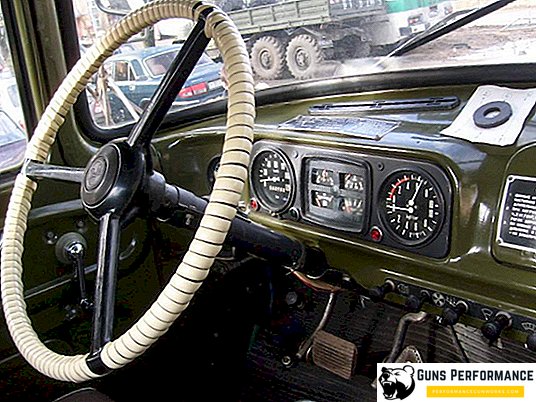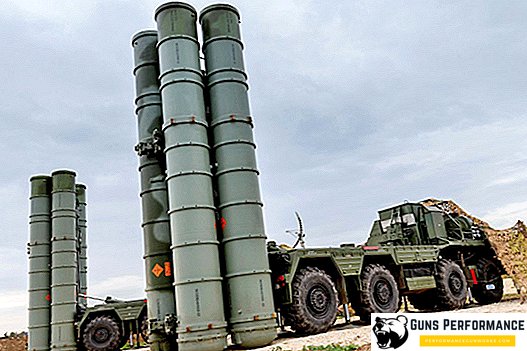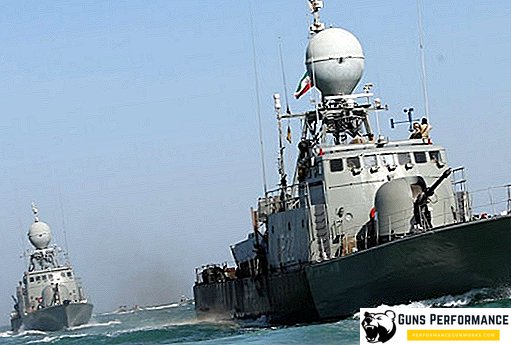The main task of combat aviation is to strike at the enemy, destroy his manpower, equipment, fortifications, infrastructure and other targets. Bombers are divided into strategic and tactical. The task of the latter is to strike at the front edge of the enemy and in his immediate operational rear.
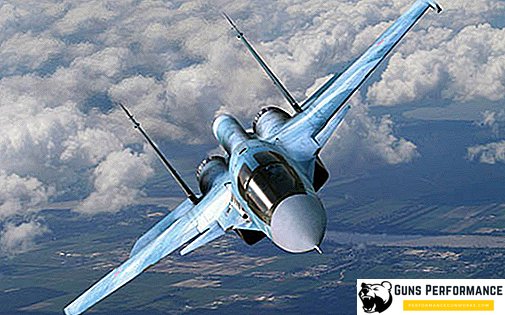
Today, the boundary between the various classes of combat aircraft is blurred. Tactical bombers include almost any aircraft capable of carrying missile and bomb weapons. Only strategic aircraft continue to occupy a rather specific niche. It is sometimes quite difficult to draw a clear boundary between a ground attack aircraft, a front-line bomber and a fighter-bomber.
Very often, front bomber tasks are performed by fighter-bombers - multi-purpose aircraft that can not only deliver bombing strikes, but also conduct air combat. The newest front-line bomber, which was recently adopted by the Russian Air Force, is the Su-34. According to some of its characteristics, this machine is one of the best in the world.

Aircraft history
In the Soviet Union at the end of the 80s of the last century, third-generation aircraft were used: Su-24, MiG-27 and Su-17. They were made in the 70s, had quite good technical characteristics, perfect navigation equipment and aiming systems, effective armament. However, these aircraft were already outdated and did not suit the Soviet military leadership. Therefore, at the end of the 80s, the development of a new front bomber began on the basis of the Su-27 aircraft at the Sukhoi Design Bureau.

The development of the new aircraft began in 1986. The basis was taken Su-27UB (combat training), the factory index of this machine - T-10B. The main designer of this project was appointed Martirosov. Developers had to solve difficult and often very contradictory tasks: in one plane it was necessary to combine high maneuverability and speed with a serious combat load and range.
The base aircraft Su-27UB has undergone numerous changes: it was immediately installed new radio-electronic equipment. The cockpit layout was changed: now the two pilots were sitting in the cockpit next to each other, and not one after the other. In addition, the wing geometry was somewhat modified, the plane had a new influx, and the front horizontal tail was installed. In the new aircraft decided not to use adjustable air intakes. New placement of pilots in the cockpit has improved ergonomics, made more comfortable long-haul flights. In 1988, the first draft design of the new aircraft.

For the new Su-34, a system of in-flight refueling was developed.
The military was not thrilled with some of the innovations that the designers had foreseen in the new car, but still they were implemented.
In 1990, the design of the new aircraft was completed, and at the end of the year a prototype machine was built. However, later the country in which they began to build this aircraft disappeared from the political map of the world, and the work was permanently suspended.

In 1992, the future Su-34 front-line bomber was shown to journalists. The serial Su-34 took off in 1994 at the Novosibirsk Aircraft Manufacturing Plant, the following year the car was shown at Le Bourget.
State tests of the Su-34 began only in 2006, and they were completed in 2011. In 2014, the Su-34 bomber adopted the Armed Forces of Russia.
In 2018, fifteen aircraft took part in the parade in honor of the anniversary of the Victory in World War II.

The Russian Air Force plans to purchase 124 Su-34 aircraft. One such machine is worth about one billion rubles. The NARO named after Chkalov, where the planes will be assembled, has invested a serious amount in the modernization of the assembly line.
general description
The Su-34 front-line bomber was designed to deliver bombing attacks in the enemy’s tactical and operational rear, in all weather conditions, day or night, including using low altitudes. Also, this aircraft can conduct air combat and destroy enemy vehicles.
The aircraft was created according to the normal aerodynamic configuration, with a wing of average location and an additional front horizontal tail. The Su-34 has two two-contour turbo-re-aktivnye dv-ga-tela with a form-ka-me-ra-mi and two-fin vertical plumage. The tail plumage is all-turning.
Aircraft landing gear - tricycle. The front pillar has two wheels, the main pillars are equipped with four wheels.

In front of the aircraft there is a radar station, covered by a radio-optical-ny ob-te-ca-tele, as well as a cockpit. A special boom is installed at the front of the machine, which is used to refuel in the air. The cockpit is protected by titanium armor, its thickness - 17 mm. Also armored and the main fuel tank of the aircraft. Behind it is a compartment with radar equipment. The entrance to the cab is located in the niche of the nose landing gear. Lantern cockpit opens only for technical work. The weight of the armored cab is 1.5 tons.
The cabin provides a recreation area in which there is a first-aid kit, a supply of drinking water, a microwave and a dry closet. In the cockpit there are two airborne chairs, which provide emergency evacuation of the crew from the aircraft at all speeds and flight modes. Each crew member has a special rescue kit, which includes a radio beacon, a life raft, a stock of food, equipment and medicines.
The tail of the Su-34 aircraft consists of two compartments with engines, the central and tail boom.
Engine air intakes are unregulated and have a rectangular cross section.

The plane has two two-contour tur-re-a-reactive dv-ga-tela with a for-sazh-mi cam-me-ra-mi AL-31F. There is also an auxiliary power unit. Each engine is equipped with an independent fire extinguishing system.
The fighter-bomber has four fuel tanks, with a total capacity of more than twelve thousand liters.
Electronic equipment is represented by a rear-view radar, which makes it possible to identify targets in the rear hemisphere, as well as an optical-electronic sighting and navigation complex, it consists of an inertial cyan-on-vi-ga-cy-on-nya system -m-with-a-ni-si-si-ko-wow-wi-ga-ts-on-noi system-tem and media-st-wa-mi ra-dio-na-vi- ha-tion.
The avionics complex Sh-141 includes a phased-array radar, an electronic warfare system and an onboard computer that processes the received data. The radar allows you to fly at ultra low and low altitudes. Also on the Su-34 installed thermal imaging and television sighting systems, which are combined with a laser rangefinder-target designator. The radar can lead to several air targets (up to ten) and detect even small ground targets at a considerable distance.

Su-34 has 12 suspension points. The aircraft is equipped with an automatic 30-mm push-hoy GSH-301 (combat-kit-180 hp-row). Controllable, core-rec-ti-ruue and non-controllable bombs and races of a very wide no-men-la-tu-ry can be installed on the plane. .
Here are some types of weapons that are installed on the Su-34:
- NUR various calibers;
- bombs of different types (34 x 100 kg, 22 x 250 kg, 12-16 x 500 kg);
- guided missiles of types (Kh-25, Kh-29, Kh-31P, Kh-59, Kh-59M, Alpha, Yakhont, Mosquito);
- adjustable bombs (KAB-500 and KAB-1500);
- X-59M missiles;
- KAB-1500 bombs (3 pieces);
- beacons of different types;
- R-27 missiles (up to 8);
- R-77 missiles (up to 8) medium range;
- R-73 missiles (up to 6) of short range.

Su-34 ratings
Su-34 is preparing to become the main strike machine of the Russian army. He already participated in real hostilities during the Georgian war in 2008. However, the assessment of this aircraft is not entirely unambiguous.
In 2008, the Su-34 was not able to use high-precision weapons and struck conventional bombs and missiles.
In a modern war, a single radar station is not enough to detect and destroy targets, which was shown by the events in Georgia and in the North Caucasus. For the guaranteed detection of such targets, perfect thermal imaging and television systems are necessary, and the Su-34 is not up to par with them. In the fight against the high-tech adversary of the Sh-141 radar, the aircraft will be actively suppressed, and in itself it is a unmasking factor.
The Su-34 was one of the best cars in the world in the late 80s of the last century, but now many of its systems are already outdated. This aircraft has powerful weapons, but the sighting system must be improved.

Currently, the Su-34 is the most advanced attack aircraft of Russia, and it must replace the clearly outdated Su-24.
Specifications
Below are the technical characteristics of the Su-34 front-line bomber.
| Aircraft | Su-34 |
| Prototype year | 1990 |
| Years of mass production | since 1993 |
| Aircraft length, m | 23,3 |
| Wingspan, m | 14,7 |
| Wing area, m | 62 |
| Weight: | |
| maximum take-off, kg | 45 000 |
| fuel in internal tanks, kg | 12100 |
| combat load, kg | 8 000 |
| Engine type | AL-31F |
| Traction on afterburner, kgf | 2×12 800 |
| Maximum flight speed, km / h | 1 900 |
| Maximum number M | 1,8 |
| Maximum ground speed, km / h | 1 400 |
| Practical ceiling, m | 15 000 |
| Maximum operating overload | 7 |
| Flight range with full refueling: | |
| at high altitude, km | 4 000 |
| by land, km | 1 400 |


